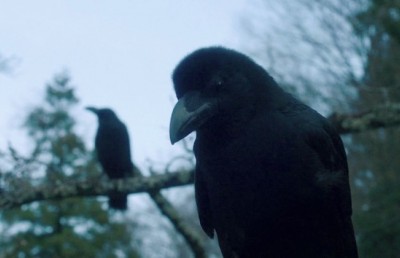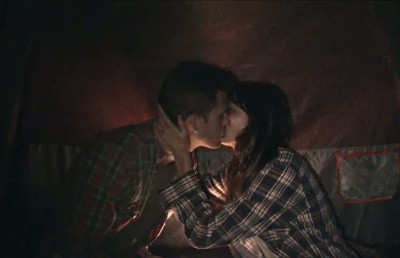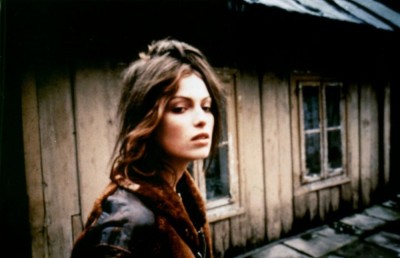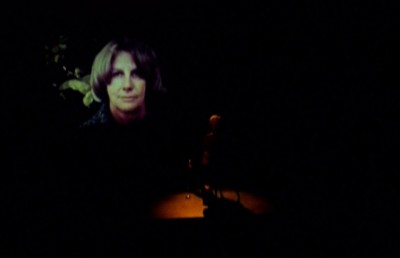Thanatomorphose and Halley: Sex, Death, and the Emptiness of Being
Decaying at Fantasia 2013
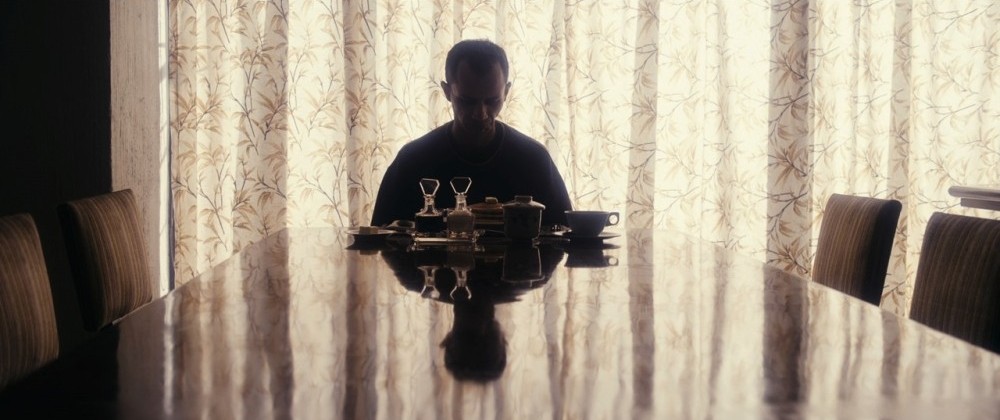
Flesh falling from skin, oozing fluids dripping from limbs, human decay, rotting living flesh. These images are all too familiar to any seasoned participant of Montreal’s annual genre film festival, Fantasia. Whether in the guise of a traditional zombie or something more complex, the 2013 incarnation of the Fantasia was teeming with the strange and disturbing figure of the animated rotting corpse. Included in this year’s repertoire was the humorous and heart‐breaking film, The Battery (2012): A tale of two frenemies wandering through a zombified nation, attempting to keep a hold on their humanity. This film is less about the zombie itself, and more about the nostalgic survivor, making his way through a bleak and desolate post‐apocalyptic land. The much anticipated V/H/S 2 (2013) also lent a fair share of its time to the undead with its short “A Ride in the Park”; an amusing and horrifying glimpse as to what happens when one is bitten by the walking dead. Even the framing plot of V/H/S 2 uses the reanimated corpse as the crux of its narrative. And of course, we cannot forget the hilarious and action-packed cinematic romp of Zombie Hunter, a true midnight movie indulgence with all the right ingredients for a fun zombie saturated viewing experience. But amongst the usual staggering horde of cinematic zombies, a more sinister and thought provoking form of living corpse made its way into Fantasia’s catalogue. The year 2013 saw the inclusion of the nausea-inducing narrations of existential introspection with Sebastian Hoffman’s Halley (2012) and Éric Falardeau’s Thanatomorphose (2012). Though these films promise to deliver all the gore that comes with the rotting of a living body, do not expect the vacant stares and drool‐filled groans of your typical zombie – Halley (Alberto Trujillo) and Laura (Kayden Rose) are fully coherent and conscious people whose bodies happen to be in a state of unstoppable decay. Though perhaps these characters are not zombies in the traditional sense, they both lie on the border between life and death with the focus of their strange existence on the physical decomposition of their bodies. I found myself drawn to these two films because both are so similar in their depictions of this new form of “zombie.” Though the character’s narratives differ, they are both presented as lonely figures, singular in their plight. They are conscious and recognize what is happening to their bodies. The result is a set of films that, whilst they do shock the audience (Thanatomorphose in particular), they also allow for empathy and a deeper reflection of the issues at stake. So, what is it that Halley and Laura offer us besides the thrill in disgust? As I watched these films, I found myself constantly relating them to questions of sexuality, to existential philosophical musings, and to the nature of death in general, three things that always make horror viewing an enriching experience beyond the gore.
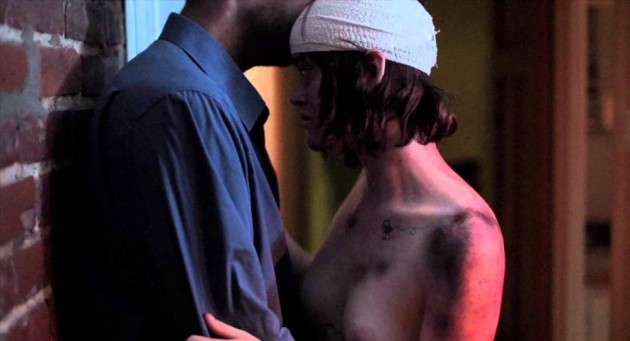
Thanatomorphose
Before I delve into the meat of the films, I would like to take a moment to discuss what makes Thanatomorphose and Halley horror films. The horror, as we instinctively know, lies in the figures of Laura and Halley. Noël Carroll refers to the misgivings felt by audiences in the presence of that, “such as rotting and disintegrating things,” (Carroll, p. 32) which is an incomplete representative of their class. Though Laura and Halley are inherently human, they have become zombie‐like figures in a state of living decay. This is what makes them monstrous. It is the element of the vile that provokes a response of fear and disgust. ‘Art-‐horror’ is the term that Carroll gives to this compound emotion. There is a tendency within horror stories to “describe monsters in terms of and to associate them with filth, decay, deterioration, slime and so on” (Carroll, 33). Indeed, a certain abhorrence is felt at the impurity of those things which “figure ambiguously in terms of categorical oppositions such as me/not me, inside/outside, and living/dead.” Things such as “spittle, blood, tears, sweat, hair clippings, vomit, nail clippings, pieces of flesh, and so on” (Carroll, 33) – all things that both Thanatomorphose and Halley are rife with.
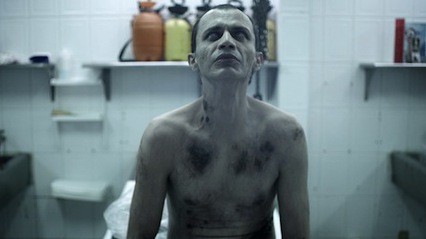
Halley
Though the typical zombie film focuses on the survivor in a world ravaged by living corpses, Thanatomorphose and Halley take the bodily characteristics of the zombie – the rot and the excess of oozing blood and other fluids — and place them upon the protagonist. Rather than having the philosophical questions of the film explored by the survivor, there are no survivors. Instead, we must experience the decay along with the film’s central figure. The philosophical implications of Halley and Laura’s scenarios are manifold – we as viewers can easily imagine that their bodies are outward manifestations of greater internal dilemmas. As many zombie films are vehicles for existential commentary, Laura and Halley can be seen as the most putrid and tragic figures of existential angst. Consider Sartre’s Nausea, which to sum up briefly, is the tale of Antoine Roquentin who begins to experience what he describes as “nausea,” a sickening and worrisome sensation brought on by situations and inanimate objects, affecting his ability to define himself. Given the link between horror and disgust, “Roquentin’s existential crises resemble a horror story” (Hanscomb, 6). The objects in Roquentin’s world take on monstrous and disgusting proportions as they “reach beyond the routine and functional boundaries of everydayness” (Hanscomb, 6). “Things have broken free of their names,” writes Roquentin in his diary:
They are grotesque, stubborn, gigantic, and it seems ridiculous to call them seats or say anything at all about them: I am in the midst of Things, which cannot be given names. Alone, wordless, defenseless, they surround me, under me, behind me, above me. They demand nothing, they don’t impose themselves, they are there” (Sartre, 180).
And this transformation extends to Roquentin’s body as well. He sees his “hand spread out on the table. It is alive… It looks like an animal upside down” (Sartre, 143-144). In Being and Nothingness, Sartre writes that:
What for the Other is his taste of himself becomes for me the Other’s flesh. The flesh is the pure contingency of presence. It is ordinarily hidden by clothes, make‐up, the cut of the hair or beard, the expression, etc. But in the course of long acquaintance with a person there always comes an instant when all these disguises are thrown off and when I find myself in the presence of the pure contingency of his presence. In this case I achieve in the face or the other parts of a body the pure intuition of flesh. This intuition is not only knowledge; it is the affective apprehension of an absolute contingency, and this apprehension is a particular type of nausea (Sartre, 343-344).

This passage and its description of the gap between a person and the world, is an expression of the absurd: an absurdity that is signified in Nausea by “viscous, sticky, sugary substances; substances that are neither liquid nor solid, that are overflowing, unruly and clingy” (Hanscomb, 8).
The compelling thing about Thanatomorphose and Halley is that this tactile and oozing element of the absurd is transferred on to the site of the body, creating a taboo tableau that simultaneously disgusts, frightens, and fascinates us. Ultimately, the cause of Roquentin’s nausea is the superfluity of objects. “They are ultimately unexplainable… they are without final purpose and would ultimately make no difference if they did not exist” (Hanscomb, 8). However, for Thanatomorphose and Halley, this superfluity is transposed onto the human, wherein Laura and Halley confront the own inexplicable and insignificant existence of their own flesh in an introspective dance of bodily horror.
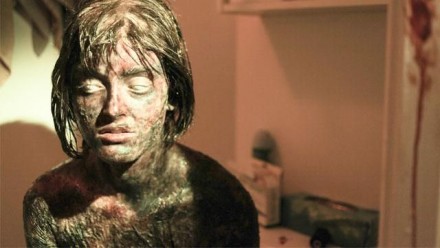
Thanatomorphose, with its sparse setting of a minimally decorated apartment, allows full immersion into Laura’s experience, a doomed 20‐something woman whose body begins to rot without any logical cause. The Kafkaesque tale is linked, by the very structure of the film’s narrative, to Laura’s mental state surrounding her relationships with men. Though the film has been panned for lacking plot and emotion, the image of Laura’s decomposition embodies a philosophical symbolism that is worth exploring. The film’s opening scene is an abrasive vision of Laura and her boyfriend in the midst of a sexual encounter and though it might seem appropriate to immediately assume that the strange affliction that strikes Laura soon after this event is an effort to punish her for her sexuality, I argue that rather, in a strange twist of agency, Laura is punishing herself for allowing violence to be acted upon her own body. The film is simply a means for us to experience with her and to leave not only fighting nausea, but also musing on Laura’s own existential crises and self‐hatred and its relation to the world outside her small apartment.
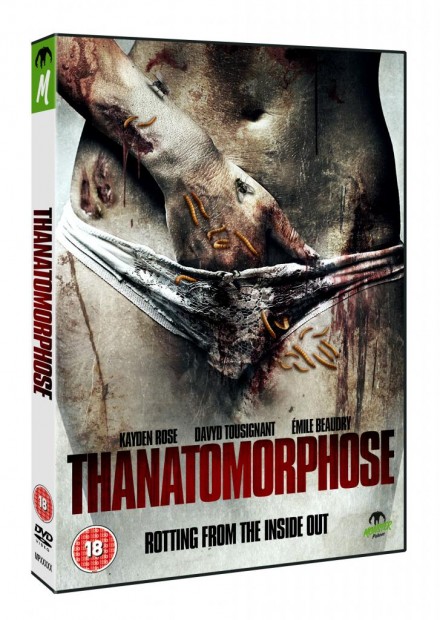
Clearly, Thanatomorphose, is meant to be an exploration of Laura’s philosophical and sexual crises. The posters and DVD covers for this film are sexual in nature, either a vague depiction of rot in the shape of female genetalia or a bloody female body, her hand placed suggestively between her legs. The implication being that Thanatomorphose is a form of body horror typically associated with the punishment of the female body and a perverse form of sexuality. It is easy to dismiss Thanatomorphose as standard body horror with a misogynistic slant and certainly, the mise-en-scene is heavy with these tropes as Laura’s only onscreen relationships are sexually abusive. But, though in a decidedly gruesome way, Laura’s physical disintegration coincides with a newfound reclaiming of her own body, loathsome as it has become. She shuns the men (okay, she kills at least one of them off but this is a horror film, after all), and takes control of her own sexual pleasure in an, albeit gruesome, scene of self‐love. Georges Baitaille, discussing the horror of death, muses that “the loathing of nothingness” is at the “origin of the loathing of decay” and that a complexity arises in that excrement, as “analogous to corpses” emits from a place close to the “sexual parts” creating a complex of prohibitions that are inextricable (Bataille, 242). Bataille argues the closeness of death and birth, and Laura’s slow decay towards death, also results in her philosophical rebirth. As Bataille states: “death is that putrefaction, that stench… which is at once the source and the repulsive condition of life (Bataille, 243).
At first glance, Sebastian Hoffman’s Halley is of an entirely different breed than Thanatomorphose; a slower moving, more humanizing account of Halley, an ordinary man whose body is also disintegrating for some unnamed cause. But despite less shocking overall imagery, the film is not without its visceral moments. After all, it’s difficult to portray the slow rot of a living body without showing all the gore that is the byproduct of the process. Like Thanatomorphose, much of the film is dedicated to showing Halley moving through mundane and orderly tasks. Both Halley and Laura collect mementos of their putrefaction in glass jars: Laura saves pieces of her body whilst Halley methodically picks off and stores maggots, watching as they metamorphose into flies. We watch as Halley putters around his obsessively neat apartment, cooking meals that he cannot eat. The pacing and starkness of Halley makes this ordering of life more poignant than in Thanatomorphose. This distillation of life into its dull and commonplace everyday activities is rendered strange and disturbing by their contrast to the overwhelming presence of death. Part of Halley’s daily bathroom routine includes stapling together the rotting flesh of his torso. In a sense, these activities serve to at once call attention to and desensationalize the status of being a living corpse.
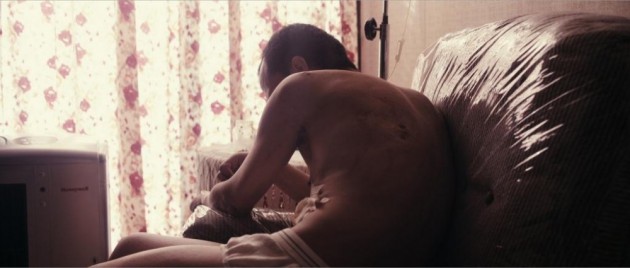
Perhaps the most compelling concern of the film is Halley’s sexuality. Though his desire has not disappeared, his sexual life is empty and angst ridden. His complete impotency due to his affliction is tragic. While Thanatomorphose remained conscious of gender, Halley’s narrative trajectory, rather than attempting to reclaim some sort of masculinity for its protagonist, winds its way to a conclusion that exists outside the realm of sex and gender. In one of the more gruesome scenes in the film, Halley is freed from sexuality and masculinity and, eventually death. The scene follows a particularly poignant moment wherein Halley’s boss from his recently quitted job, attempts to seduce him over several drinks and some awkward dancing (dancing with a half‐rotted body proves to be a difficult task). Halley’s condition of living decay renders him unable to perform so he leaves, aroused and unsatisfied. The sexual desire, still a spark inside him, leads him to his bed where he attempts to masturbate himself to a little death resulting in not an orgasm, but a castration as his fragile appendage is torn from his body. This scene, unlike its counterpart in Thanatomorphose, does not result in a sort of sexual freedom, but rather a freedom from sexuality itself. Though much is made in psychoanalysis of the threat of castration, which is a trope often brought up in relation to horror film (from the writings of Barbara Creed), what is significant about Halley’s experience is that his castration is the result of his own actions, thus avoiding a typical gendered response so often repeated in the genre. Halley is instead positioned outside of the realm of being “purely human.” Rather Halley’s experience places him closer to the nature that putrefaction suggests.
Similar to Thanatomorphose, the destruction of Halley’s body, though a form of death, is also akin to a rebirth. To return to Bataille who writes that, “nascent life is not distinct from the putrefaction of life which death is” (Bataille, 252). He muses that the:
procreative power of decay… is undoubtedly the source of the idea that men are nature’s offspring: as if decay finally summed up this world from which we emerge and into which we return, so that the same –and the repugnance– is linked both to death and to birth” (Bataille, 252).
In short, death, birth, and nature are all part of a fetid cycle; bodies rot and are reborn in fluid, an “infinite life which stretches forth like the night” (Bataille, 252). Thus Halley’s experience is an extreme representation of this strange chain as Bataille describes it. The final scenes have him sexless and alone, yet happy in the natural realm of the arctic cold, a move that not only slows down the process of his decay, but also returns him to a place in nature.
Both Thanatomorphose and Halley demonstrate the ability of a decaying body to provoke thought in the viewer via our simultaneous loathing and fascination. Despite the many differences, I placed them in the realm of the zombie film due to the importance placed on animated decaying flesh. But I find these films to be unique and more poignant in their capability to not only entertain horror aficionados, but to coax them into musing on more complex issues. This is due to the use of single protagonists, minimal supporting characters, and sparse settings that offer a greater connection between audiences and the central figure. What makes Fantasia such a unique and important festival is that it continues to program captivating gems like Thanatomorphose and Halley that stretch the boundaries of the horror genre.
Works Cited
Bataille, Georges, Fred Botting, and Scott Wilson. The Bataille Reader. Oxford, UK: Blackwell, 1997. Print.
Carroll, Noël. The Philosophy of Horror. New York: Routledge, 1989. Print.
Hanscomb, Stuart. “Existentialism and Art-‐Horror.” Sartre Studies International 16.1 (2010): 1-‐23. Print.
Sartre, Jean-Paul, and Lloyd Alexander. Nausea. New York: New Directions, 1964. Print.



